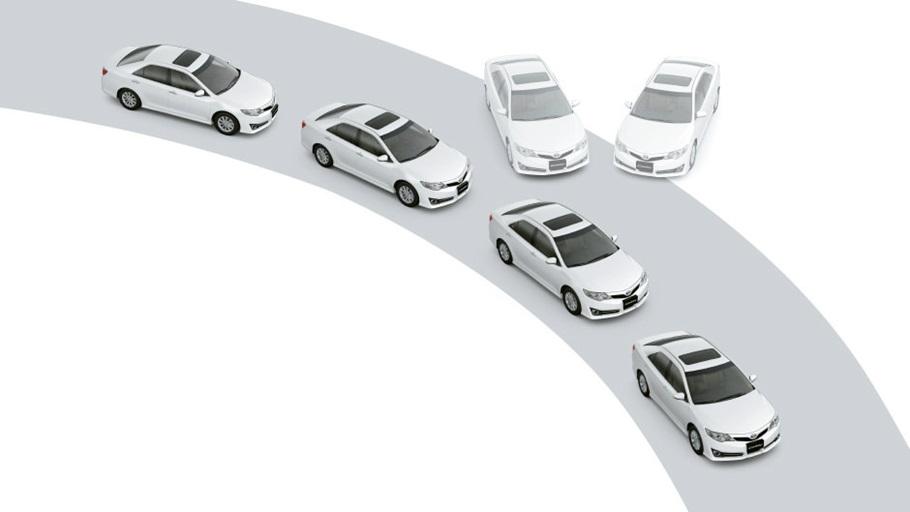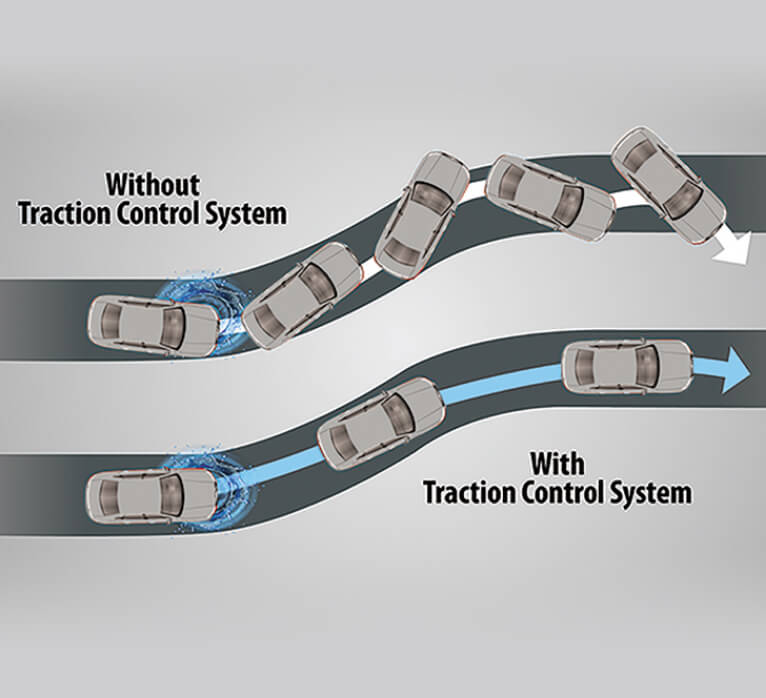Mazda vehicles are equipped with a wide range of safety technologies designed to enhance driving stability and prevent accidents. One such advanced feature is the Traction Control System (TCS), a critical safety mechanism that ensures maximum control and performance in various driving conditions. The TCS prevents wheel slip by automatically adjusting engine power or applying brake force when a wheel loses traction, such as on wet or icy roads. This system helps maintain vehicle stability, reduces the risk of skidding, and provides an overall smoother driving experience. In this article, we will explore the Traction Control System in Mazda vehicles, how it works, its benefits, and why it is crucial for your safety and driving performance.
What is the Traction Control System (TCS)?
The Traction Control System (TCS) is a vital safety feature in modern vehicles, designed to prevent wheel spin when driving on low-traction surfaces. The system detects when one or more wheels lose traction (for instance, when driving on wet or icy roads) and automatically applies the brakes or reduces engine power to prevent the wheels from spinning. This intervention helps the vehicle maintain traction, ensuring better control, stability, and safety.

Mazda’s TCS uses a combination of sensors, including wheel speed sensors, to monitor the rotational speed of each tire. When the system detects that one wheel is spinning faster than the others, it takes corrective action. The system either reduces engine power or brakes the spinning wheel to restore traction, allowing the vehicle to regain stability.
How Does Mazda’s Traction Control System Work?
Mazda’s Traction Control System is seamlessly integrated into the vehicle’s overall safety suite. The system is connected to various sensors, including the Anti-lock Braking System (ABS) and Electronic Stability Control (ESC), to optimize performance in challenging driving conditions.
The process begins when the system detects a loss of traction in one or more wheels. For example, if a wheel begins to spin due to a slick surface, the TCS will first attempt to reduce the engine power by limiting fuel supply. If this doesn’t solve the problem, the system will apply the brakes to the spinning wheel, helping to transfer more power to the wheels with better traction.
In vehicles equipped with all-wheel drive (AWD) or rear-wheel drive (RWD), the TCS can work in combination with the differential system to distribute power more evenly between the wheels, ensuring maximum traction. Mazda vehicles equipped with TCS provide a smoother and more stable driving experience, even in challenging conditions such as rain, snow, or ice.
Key Benefits of Traction Control System in Mazda Vehicles
1. Improved Vehicle Stability
The primary benefit of the TCS is enhanced stability. It helps maintain control of the vehicle, especially when driving on slippery surfaces. Whether you’re navigating through heavy rain or icy roads, the system ensures that the wheels do not lose traction, reducing the risk of skidding or spinning out of control. With Mazda’s TCS, you can drive with confidence, knowing that the system is constantly monitoring and adjusting the vehicle’s power for optimal stability.
2. Enhanced Safety
Safety is a top priority for Mazda, and the Traction Control System significantly contributes to it. By preventing wheel spin and reducing the likelihood of skidding, TCS minimizes the chances of accidents, especially in emergency situations or adverse weather conditions. Whether you’re accelerating from a stop or driving on a slick road, Mazda’s TCS keeps you safe by ensuring that the wheels maintain proper grip with the road surface.
The system works in conjunction with other safety features, such as Anti-lock Braking System (ABS) and Electronic Stability Control (ESC), providing a comprehensive safety solution. Together, these technologies provide a more stable and safer driving experience, especially during challenging road conditions.
3. Reduced Wheel Spin on Slippery Roads
One of the most notable advantages of TCS is its ability to prevent wheel spin. When driving on wet, icy, or snowy roads, the tires are more likely to lose grip, causing the wheels to spin uncontrollably. The TCS actively monitors each wheel’s speed and ensures that the spinning wheels are slowed down by applying brakes or reducing engine power. This helps reduce the risk of losing control of the vehicle, especially when accelerating or driving uphill on slick surfaces.
Mazda’s TCS is highly effective in improving traction, allowing for smoother and safer acceleration, even on challenging surfaces. It provides a more controlled driving experience by preventing the wheels from spinning excessively.
4. Enhanced Driving Performance
TCS not only improves safety but also enhances driving performance. By maintaining better control over the wheels, the system ensures that power is efficiently transmitted to the road, resulting in smoother acceleration and braking. In addition, Mazda’s TCS reduces the chances of losing traction during sharp turns or sudden maneuvers, allowing the driver to navigate corners with greater ease.
Whether you’re driving through snow-covered roads or on a winding mountain pass, Mazda’s TCS helps maintain optimal performance by ensuring that the wheels maintain the right amount of grip, resulting in better cornering and smoother handling.
5. Prevention of Oversteering and Understeering
Oversteering and understeering are common driving challenges, especially when driving on slippery roads. Oversteering occurs when the rear tires lose traction, causing the vehicle to spin out, while understeering happens when the front tires lose grip, preventing the car from turning as expected. Mazda’s TCS works in tandem with the Electronic Stability Control (ESC) to reduce both oversteering and understeering, providing better control and preventing the vehicle from veering off course.
By regulating engine power and braking force to the spinning wheels, TCS helps prevent both types of instability, ensuring that the vehicle stays on track and responds predictably to steering inputs.
TCS and Other Safety Features in Mazda Vehicles
Mazda integrates the Traction Control System into its comprehensive safety suite, working alongside other advanced technologies to provide a superior driving experience. Some of the key systems that complement TCS in Mazda vehicles include:
1. Electronic Stability Control (ESC)
ESC is designed to help prevent skidding and loss of control, especially during extreme steering maneuvers. When ESC detects that the vehicle is starting to skid or lose control, it automatically applies brakes to individual wheels to help steer the vehicle back on course. Together with TCS, ESC ensures that Mazda vehicles remain stable, even in challenging driving conditions.
2. Anti-lock Braking System (ABS)
ABS helps prevent the wheels from locking up during emergency braking, reducing the risk of skidding. When combined with TCS, ABS helps improve vehicle stability during braking, ensuring that the wheels maintain traction and that the vehicle stops more effectively in slippery conditions.
3. All-Wheel Drive (AWD) or Rear-Wheel Drive (RWD) Systems
Mazda’s AWD and RWD systems work in conjunction with TCS to ensure that the vehicle maintains traction on all four wheels, regardless of road conditions. These systems provide better distribution of power, ensuring that the vehicle remains stable and balanced while driving on slippery surfaces.
Common Issues with TCS and How to Address Them
While Mazda’s TCS is a highly reliable safety feature, there are some issues that drivers may encounter. Here are a few common problems and solutions:
1. TCS Warning Light
If the TCS warning light appears on the dashboard, it may indicate a malfunction in the system. This could be due to a faulty sensor, a problem with the engine control module, or issues with the braking system. It’s important to have the system checked by a professional mechanic if the warning light comes on.
2. Reduced Performance
If you notice reduced performance or if the system isn’t responding properly, it could be due to issues with the wheel speed sensors or the brake components. Regular maintenance and timely repairs can help keep the system in optimal working condition.
How to Maintain Mazda’s Traction Control System
Proper maintenance of the Traction Control System is essential to ensure that it functions properly. Here are some tips to keep the system in optimal condition:

- Check Tire Pressure Regularly: Proper tire pressure is crucial for optimal TCS performance. Low tire pressure can reduce traction and affect the system’s ability to function correctly.
- Ensure Regular Brake Maintenance: The TCS relies on the braking system to function effectively. Regular brake checks and maintenance are essential to prevent issues with the system.
- Inspect Wheel Speed Sensors: The wheel speed sensors play a vital role in the TCS operation. Regularly inspect these sensors for any signs of damage or wear.
Conclusion: The Importance of TCS in Mazda Vehicles
The Traction Control System (TCS) is an essential safety feature in Mazda vehicles, designed to enhance vehicle stability, prevent accidents, and improve overall driving performance. By preventing wheel slip and maintaining traction on slippery surfaces, TCS ensures that drivers stay in control, even during challenging conditions. When combined with other advanced safety technologies, such as Electronic Stability Control (ESC) and Anti-lock Braking System (ABS), TCS provides a comprehensive safety solution for Mazda drivers. Regular maintenance of the system ensures its optimal performance, allowing you to enjoy a safer and more reliable driving experience.

Leave a Reply